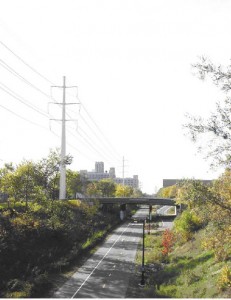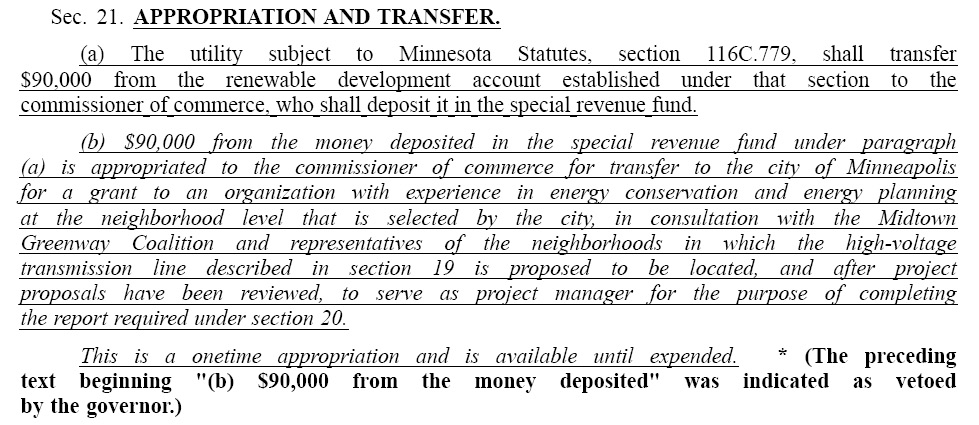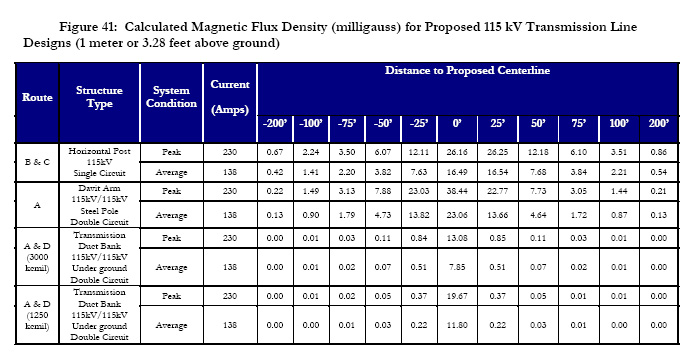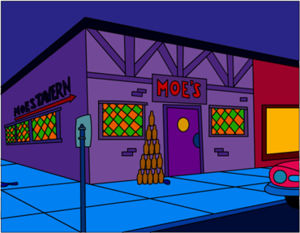Xcel had 9,083 peak in June?
June 29th, 2011

(Yes, that’s Summer grrrrrrrrrrl.)
Remember how hot it was back a couple of weeks ago? Xcel’s Tim Carlsgaard was again bragging about Xcel’s peak:
9,083 MW
There’s plenty of time this summer to ramp it up higher, but so far, 9,083.
Here’s Xcel’s peak demand for the last decade, taken from their 10-Ks filed with the SEC:
 Carlsgaard’s number came from an informal calculation or two, interruptible service was part of it, and I think it was deducted, but you never can be sure with a PR shill!!! Anyway, 9,083MW is nothing to write home about. If you remember, Capx 2020 was based on a 2.4% increase ANNUALLY. If we’d done that, starting from 2005, we’d be at:
Carlsgaard’s number came from an informal calculation or two, interruptible service was part of it, and I think it was deducted, but you never can be sure with a PR shill!!! Anyway, 9,083MW is nothing to write home about. If you remember, Capx 2020 was based on a 2.4% increase ANNUALLY. If we’d done that, starting from 2005, we’d be at:
10,620 MW
So we’re down about 1,600MW from their projections, and from what CapX was based on…
Their projections of a 2.4% increase annually add up quickly:
2005 – 9,212
2006 – 9,433
2007 – 9,659
2008 – 9,891
2009 – 10,128
2010 – 10,371
2011 – 10,620
In 2006 they jumped ahead of projections by a couple of years, but since then have dropped further and further behind, now with a peak trailing behind the peak of 2005…
So one way of looking at it is that they’ve pushed the “need” for additional power out for years.
Another way of looking at it is that they’re about three 500MW coal plants shy of what they projected.
Another way of looking at it is that they 1,600MW short is about Prairie Island’s and Monticello’s three nuclear reactors short.
Another way if looking at it is that it’s 1,00MW of cheap generation for wholesale and there’s plenty of room on 2,050-2,211 MVA (4,100-4,422 MVA double circuited) CapX 2020 transmission to ship that over to points east… (see MCEA, ME3, Waltons Schedin IR3)
So Tim, do tell, where am I off here??? p.s. Always check my math, I’m an attorney, not a vet, because my brain has grey sponge in the math department.
ILSR’s Farrell on Fed Transmission Scam
June 29th, 2011
ILSR’s John Farrell is halfway there – he recognizes the federal part of the transmission equation, but the state part is missing, for example, Minnesota’s special eminent domain exemptions for “Public Service Corporations” (particularly where the transmission is for private profit, NOT public service), rate recovery for “Construction Work in Progress” and state regulators refusal to examine the interstate nature of transmission proposals. And the third part of that unholy trinity — in the Midwest, bulk power transmission would not be being built but for the Settlement Agreement – ME3(Fresh Energy), Izaak Walton League (and Walton’s program Wind on the Wires), Minnesota Center for Environmental Advocacy, and North American Water Office. This glut of transmission is their legacy. It takes all three to build transmission.
From Grist, today:
Feds running a high-voltage gravy train for power transmission
by John Farrell
28 Jun 2011 6:00 AM
Even as distributed generation shows economical and political advantages over centralized renewable energy, the Federal Energy Regulatory Commission (FERC) is running a high voltage gravy train in support of expanded transmission. FERC’s lavish program is expanding large transmission infrastructure at the expense of ratepayers instead of looking at more economical alternatives.Since 2007, FERC has had 45 requests for bonus incentives for transmission development — authorized under the 2005 Energy Policy Act — and has provided all or most of the requested incentives in more than 80 percent of the cases. With the bonuses, the average return on equity for utilities for their new transmission investments is nearly 13 percent. This high rate of return is a full 2.5 percentage points higher than the median utility return on equity [PDF], a value considered just and reasonable by state public service commissions in ordinary times. However, these rewards came during a time when unemployment doubled, the stock market tumbled, and most corporations were lucky to have any profit.The ratepayer impact of these bonuses is significant. In a November 2010 criticism of FERC transmission awards, Commissioner John Norris noted that the 2 percent bonus FERC provided to the PATH high-voltage project on the Eastern seaboard would “cost [Maryland] ratepayers in PJM at least $18 million per year.” The bonus payments were also given in concert with other incentives that reduced risk, including rate recovery during construction and guarantee of payment if the facilities were abandoned for reasons outside utility control.
Hiawatha Transmission Project MOES Recommendation
May 18th, 2011
Xcel Energy’s Hiawatha Transmission Project moves forward.
Recently, Comments and Reply Comments were due in this “informal” Certificate of Need proceeding. All the intervening parties in the routing docket have been sitting on their hands, or worse (I hope not, but why the silence?). So when only MOES filed “Comments” I filed Reply Comments, because theirs were SOOOOO… soooooo… well, read them yourself, they’re in INITIAL comments recommending that the Certificate of Need be approved, shouldn’t they at least make it look better by waiting to see what comes in before declaring that it should be approved?!?!?! … and the basis, well, it’s just absurd:
Here’s what I filed — I don’t have a dog in the fight, no client, no direct interest, but I cannot stand it when there’s NO response, NO filings, it’s just not right, and that’s when I get twitchy that somebody is pulling a fast one, and others did join in:
Johnson – Reply Comment Attachment
City of Minneapolis and Hennepin County Reply Comments
And then MOES has the last word, complaining that Xcel’s aren’t allowed under the PUC Rules of Practice in Minn. R. ch 7829!
Xcel’s Hiawatha Transmission Project Comments Due
March 24th, 2011
Does anyone give a rodent’s rump about Xcel’s Hiawatha Project transmission project through Phillips?
Listen up! It’s time to Comment on what we all think the scope of the Environmental Report should be for Xcel Energy’s Hiawatha Project transmission line. What should be reviewed, what system alternatives should be considered (conservation, reconductor the distribution system at issue), demand side management (demand is DOWN, DUH!), solar on every roof of Phillips to follow peak load… , whether the size of the project (the specs) conform with the need they’re claiming, whether a power factor and distribution based need claim can and should be addressed with a big honkin’ transmission line, and how ’bout some realistic magnetic field modeling, ____________ (your issue here!).
Does anyone care?
Last week was the public meeting to solicit comments on the scope of environmental review, a meeting (NOT a hearing!) held by our friends at Minnesota Office of Energy Security – MOES:
COMMENTS ON THE SCOPE OF THE ENVIRONMENTAL REPORT ARE OPEN UNTIL APRIL 6, 2011!
Send Comments to:
Bill Storm State Permit Manager Minnesota Office of Energy Security 85 7th Place East, Suite 500 St. Paul, Minnesota, 55101-2198 Fax: 651-297-7891 email: bill.storm@state.mn.us
More on Comments below… I couldn’t attend the public meeting because it was in the middle of the AWA Goodhue Wind evidentiary hearing, there was no way to do both. However, this is my old neighborhood, I spent 20 years in Prestigious East Phillips! I can’t stand the thought of this project ripping up Phillips…
To look at the dockets for this case, go to www.puc.state.mn.us and click “Search eDockets” and search for:
Hiawatha Project Routing Docket – 09-38
Hiawatha Project Certificate of Need Docket – 10-694
I’m concerned whether anyone cares, whether anyone is going to be weighing in on this, because the big intervenors in the routing case, Hennepin County, City of Minneapolis, and the Midtown Greenway Coalition have all pledged not to intervene:
Joint letter from Hennepin County, City of Minneapolis, and Midtown Greenway Coalition
Why would they say they’re not planning on intervening? Did they agree not to intervene? Why?
What does it mean if the large funded intervenors aren’t participating in the Certificate of Need docket?
Why does it matter if anyone intervenes in the Certificate of Need?
Well, it’s simple. This project isn’t needed. And in a Certificate of Need proceeding, the applicant has to prove up need. If it’s not needed, it doesn’t go forward. If you want to stop a project, force them to do it another way, the odds are a lot higher if you show up and participate in the Certificate of Need docket at the PUC. If not, well, you’re just sitting on the sidelines and stuck with whatever result happens while you’re not there. The moral to the story? SHOW UP!
During the Hiawatha Project’s PUC routing process, there were loud objections that this project was not needed, was not subject to a Certificate of Need, and should be. Rep. Karen Clark pushed through a bill requiring a Certificate of Need for this specific project:
So amid much breast-beating, this bill of Rep. Karen Clark was added to SF 3275 and became part of Ch 361. A Certificate of Need is now necessary for the Hiawatha Project.
But here’s the hilarious part — there was a $90,000 kicker to ???? some organization, to do neighborhood conservation and energy planning, $90,000, and that the project would go forward, it wasn’t hinged on the results of this “work.” The bill passes and goes on to the Gov. to be signed… SNORT… Pawlenty vetoed the $90,000 payout in the bill!
So now where are we? The money is gone… funding to a community group is pulled out from the bill. (And what community group would that be intended for… CERTS? … Xcel-funded Green Institute? What organizations have “experience in energy conservation and energy planning at the neighborhood level?”) Oh well, the project moves forward.
Next, Xcel applies for the Certificate of Need, which under this bill is not to proceed until after April 1, 2011, and now the scoping for the Environmental Report is held.
What is “scoping?” It’s when an agency collects comments and mulls it over and determines what all should be covered in environmental review. In this case, because it’s a “Certificate of Need” proceeding, system alternatives are at issue, in addition to the usual environmental suspects. And of course, a full disclosure of impacts is necessary, things like the expected range of magnetic fields. That’s a particularly prominent issue because in the routing docket, the Administrative Law Judge recommended that the Hiawatha Project be put underground due to exposure of local residents and workers to high levels of magnetic fields, higher than the threshold above which the World Health Organization would urge we exercise precaution. And of course, the reasonable levels are a lot higher than what they’re disclosing.
Before you work on your comments, take a look at what’s been posted as the “Draft” Scoping Decision:
And check out these magnetic field charts from the application – do these amp levels have any relation to the claimed need and the potential amps on the lines as spec’d?
WHAT DO YOU THINK SHOULD BE ADDRESSED IN THE ENVIRONMENTAL REPORT?
COMMENTS ON THE SCOPE OF THE ENVIRONMENTAL REPORT ARE OPEN UNTIL APRIL 6, 2011!
Send Comments to:
Bill Storm State Permit Manager Minnesota Office of Energy Security 85 7th Place East, Suite 500 St. Paul, Minnesota, 55101-2198 Fax: 651-297-7891 email: bill.storm@state.mn.us
Overland files rulemaking petition with OAH
March 11th, 2011
Oh there she goes again…
Overland has filed a rulemaking petition with the Office of Administrative Hearings to hopefully address some of the inconsistencies of the rules, and interpretation of the rules, by Administrative Law Judges handling cases for the Public Utilities Commission.
Why? Because it is SO hard for people to participate in these dockets, and the rules and the way they’re interpreted make it even harder, and are not in conformance with the Power Plant Siting Act’s requirement to make public participation a priority.
Coming soon – ones covering the issues at PUC and MOES that occur over and over and over and over and over…








